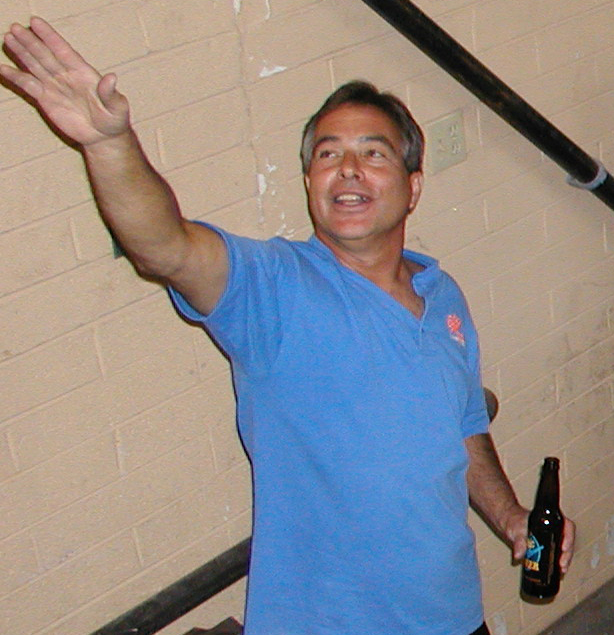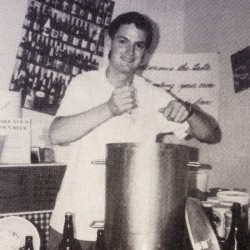Electric Dave and the Origins of Arizona’s Beer Boom
By the mid-1980s, the beer scene in Arizona, which hosts Super Bowl XLIX this weekend, was bleak.
The state’s only brewery to make it out of Prohibition for any length of time—eight tried—was the Phoenix-based Arizona Brewing Co. That brewery began to shed consumers, however, as Phoenix’s post World War II population boomed, the newcomers arriving with their own particular tastes, ones that did not always jibe with the local outfit.
In 1964, Canadian-owned Carling bought Arizona Brewing; in 1985, the Phoenix brewery closed. One of the fastest-growing states in the union was without any semblance of locally made beer.
Enter Electric Dave.
Dave Harvan blew into the old mining town of Bisbee, AZ, from the East Coast in the late 1970s in an old Volkswagen van. A one-time electrician and homebrewer, Harvan was looking to branch out, which he did in a big way, beginning in 1987. It was in that year that Harvan, decked out in a tie and wingtips he’d gotten at the Salvation Army, personally lobbied state officials to follow the growing national trend of legalizing smaller breweries and brewpubs.
Arizona did just that. Within a year, Chicago transplants Joe and Addie Mocca, with another partner, opened the state’s first brewpub, called Bandersnatch, in downtown Tempe.
But it was with Harvan that things really got going. He raised $25,000 from investors, and, in 1988, began producing beer in his Bisbee garage using a seven-barrel system he rigged up himself, complete with plastic fermentation vessels. He called the brewery Electric Brewing and its signature offering Dave’s Electric Beer. It was a pale lager, no small feat in the desert, given the lower fermentation and aging temperatures necessary versus an ale.
Harvan distributed the beers of Arizona’s first small-batch brewery since Prohibition himself, driving around south-central Arizona in his white Dodge pickup, selling kegs for $75 a pop. Such distribution, as well as the always-tiny supply, meant that Electric Brewing never grew that large (media reports pegged its top output by 1990 at a few hundred barrels). Still, it and Bandersnatch kicked open a door that many Arizona brewers have since poured through.
An arrest for marijuana smuggling in 1991 eighty-sixed Harvan’s operation. He did time; and, after his release, reopened Electric Brewing in 2000. The brewery survived into the current decade, eventually burning out as a short-lived brewpub in Tempe. (The brand lives on through the Beast Brewing Co. in Bisbee.)
Harvan’s original brewing equipment enjoyed a second act perhaps more influential than its first. Vinnie Cilurzo, a partner and the brewmaster at the then-new (now-defunct) Blind Pig brewpub in Temecula, CA, used the equipment to craft what he called Blind Pig Inaugural Ale in the spring of 1994. Concerned that Harvan’s secondhand equipment might leave off-flavors in what was supposed to be a pale ale, Cilurzo increased the amount of hops dramatically to mask any taste problems.
And thus was born the double India pale ale.
Read more Acitelli on History posts.
Tom Acitelli is the author of The Audacity of Hops: The History of America’s Craft Beer Revolution. Reach him on Twitter @tomacitelli.



is there any chance you can tell me about dave harvan?
I went to elementry school with him and would love to see him again
hoping